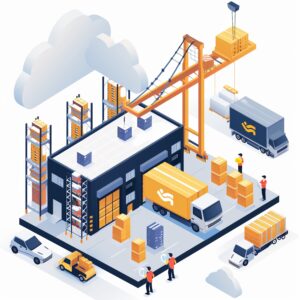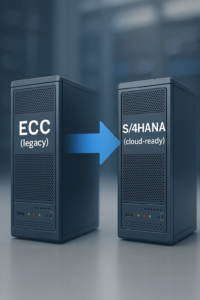Integration of Apache Kafka and SAP systems
In today’s digital landscape, data integration plays a pivotal role in ensuring the smooth flow of information across various systems. One such powerful integration is between Apache Kafka, a high-throughput distributed messaging system, and SAP systems, renowned for their enterprise resource planning capabilities. This amalgamation of Kafka and SAP presents a robust solution for real-time data streaming and analysis, fostering agility and efficiency within organizational operations.
Understanding Apache Kafka:
Apache Kafka, often referred to as a distributed event streaming platform, serves as a central nervous system for data in motion. Its architecture allows for the seamless handling of massive volumes of data and facilitates real-time processing. Kafka operates on a publish-subscribe model, where producers publish messages to topics, and consumers subscribe to these topics to receive and process the messages.
The diagram shows a distributed streaming platform made up of multiple servers that process and store streams of data. Each server is called a broker. Producers publish data to the cluster, and consumers subscribe to data from the cluster. The data is divided into topics, which are like categories or channels. Each topic is divided into partitions, which are like smaller, ordered segments of data.
The diagram also shows how data flows through a Kafka cluster. Producers publish data to the leader replica of a partition. The leader replica then replicates the data to the follower replicas. Consumers subscribe to topics and receive data from the follower replicas.

The Role of SAP Systems:
SAP systems are the backbone of many enterprises, handling diverse functions like finance, sales, logistics, and more. They capture vast amounts of critical business data, making them a treasure trove of valuable information. However, accessing and utilizing this data in real-time has been a challenge, prompting the need for efficient integration solutions.
Integration Possibilities of Kafka and SAP :
Integrating Apache Kafka with SAP systems opens a world of possibilities:
- Real-time Data Streaming: By leveraging Kafka, SAP systems can stream real-time data from various sources, allowing for instantaneous updates and insights.
- Event-Driven Architecture: Kafka’s event-driven model aligns well with SAP’s architecture, enabling seamless data exchange and synchronization between different modules or components within the SAP ecosystem.
- Unified Data Pipeline: It creates a unified data pipeline, ensuring that data flows seamlessly across systems, enabling quicker decision-making and enhanced operational efficiency.
- Scalability and Fault Tolerance: Kafka’s distributed nature ensures scalability and fault tolerance, critical aspects in handling the high data volumes typical of SAP systems.
Implementation and Benefits:
The integration of Kafka and SAP systems involves configuring Kafka Connectors tailored for SAP connectors. These connectors facilitate the smooth exchange of data between SAP systems and Kafka topics. The benefits derived from this integration are multifold:
- Real-time Analytics: Organizations can harness real-time data for analytics, enabling quick decision-making and proactive responses to market changes or operational needs.
- Streamlined Business Processes: With synchronized data flow, businesses can streamline their processes, ensuring consistency and accuracy across various operations.
- Enhanced Customer Experience: Real-time insights into customer behavior and preferences empower businesses to personalize services, enhancing overall customer satisfaction.
- Improved Operational Efficiency: The ability to access and analyze real-time data aids in optimizing resources, reducing downtime, and improving overall efficiency.
Conclusion:
The integration of Apache Kafka with SAP systems represents a paradigm shift in data handling and analytics. It enables organizations to harness the power of real-time data, facilitating agile decision-making and fostering innovation. As businesses strive to stay competitive in an ever-evolving landscape, this integration stands as a testament to the transformative potential of technology in optimizing operations and driving success. Read More.


 RECOGNISED WORLD OVER SOLUTIONS
RECOGNISED WORLD OVER SOLUTIONS
 Find out how BSC GLOBAL digitally transformed P2P cycle for worlds renowned brand in Automobile
Find out how BSC GLOBAL digitally transformed P2P cycle for worlds renowned brand in Automobile










